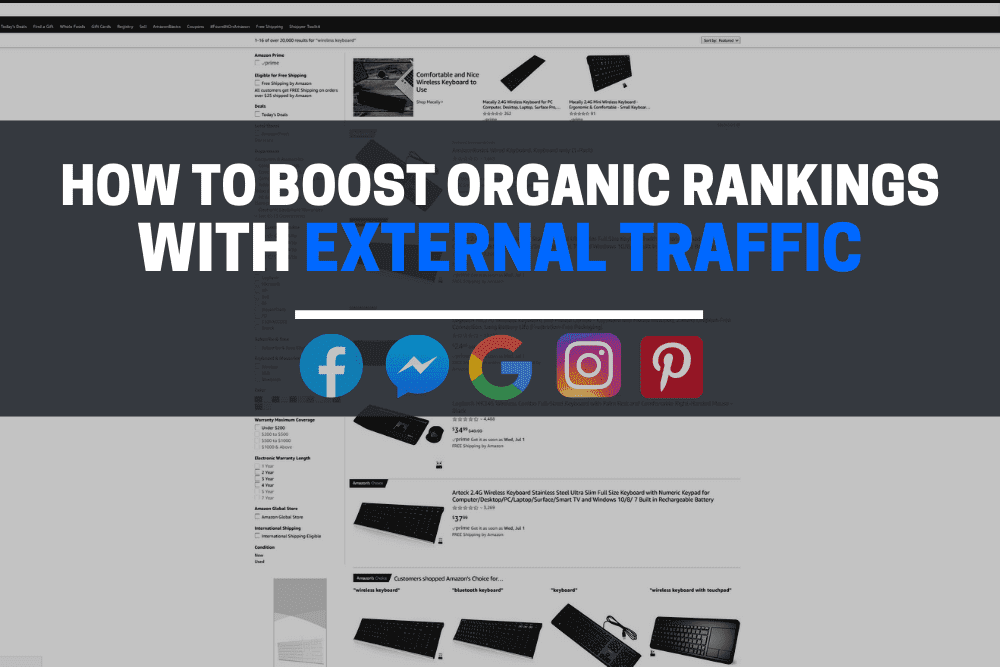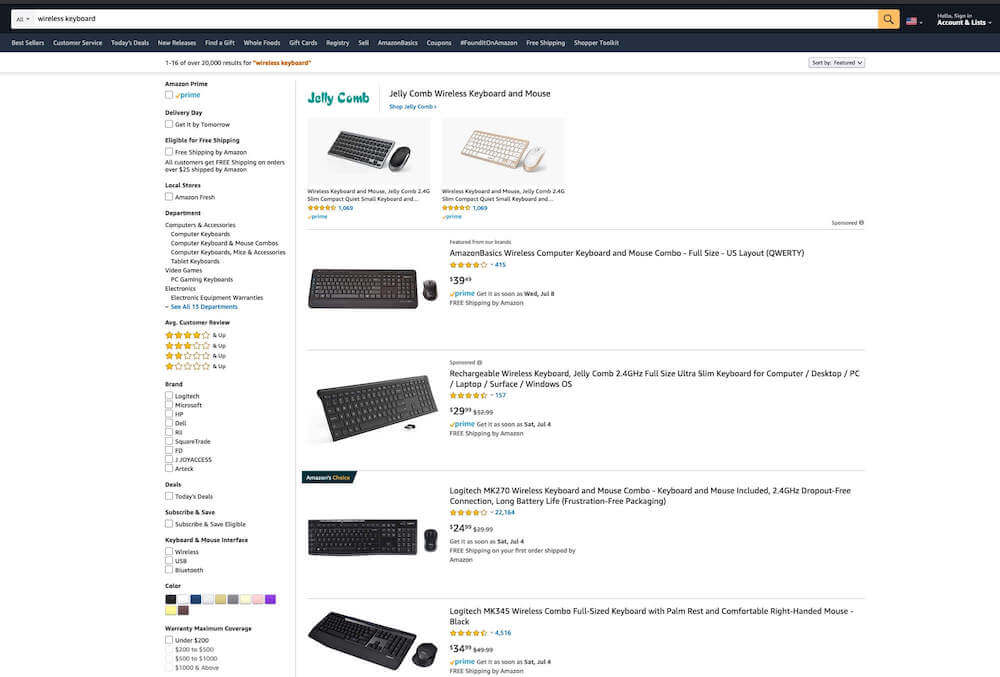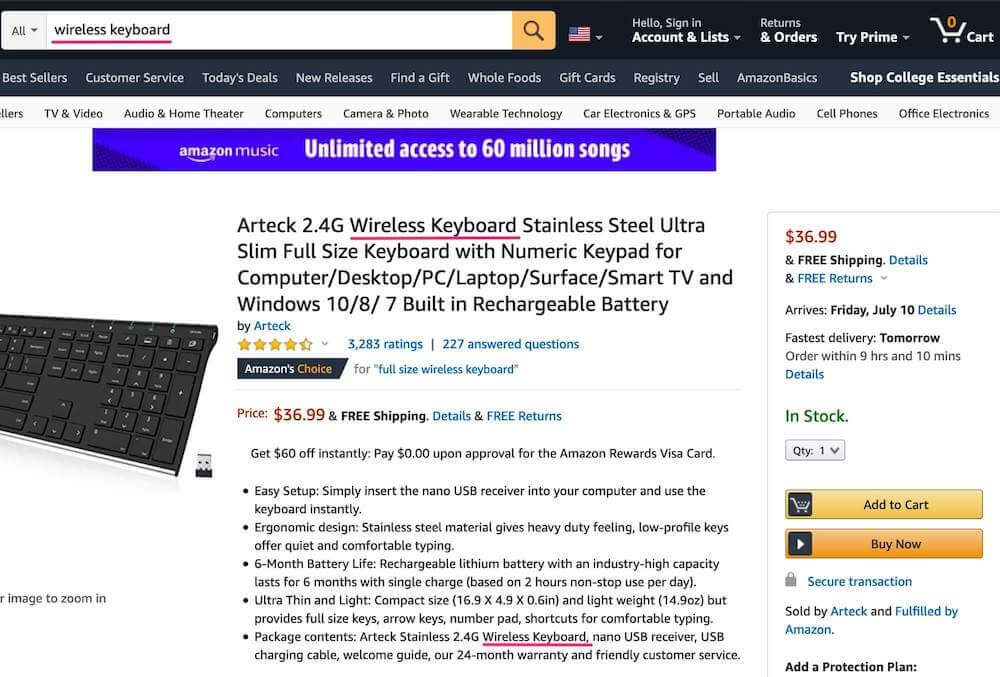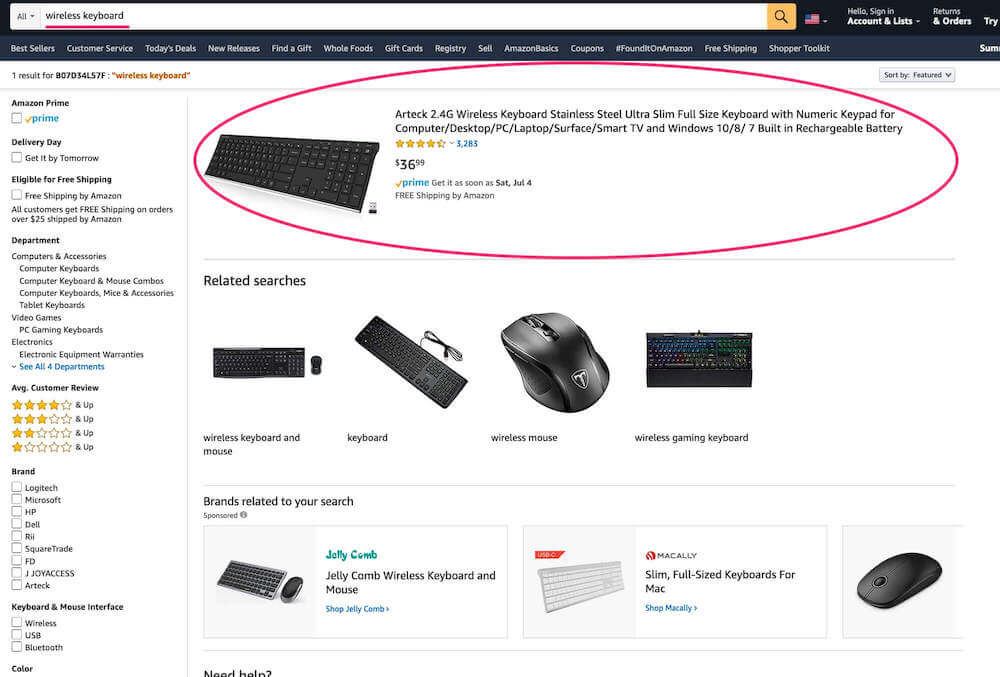
Guest post from LandingCube
Organic search rankings are the “golden goose” for Amazon sellers.
Everyone wants their product to be the first (or one of the first) to show up in Amazon’s search results for related keywords. Doing so is a path to passive traffic: sales while you sleep.
There are a number of strategies you can use to grow your organic rankings. It starts with optimizing your listing for all your relevant keywords, then branches out to other strategies, such as PPC (sponsored product ads).
The strategy we’re going to look at in this post is boosting your rankings with external traffic.
How Amazon Ranks Products
First, it’s useful to understand how Amazon’s search rankings work.

No one knows for sure, as Amazon doesn’t make this information publicly available. However, the efforts of hundreds of thousands of sellers testing and gathering data gives us a pretty clear picture.
One major factor is relevance. Amazon wants products showing up in the search results that are actually relevant to the search term used.
Optimizing this starts with the use of keywords in your product listing. It also takes into account the sales and conversion rate your product gets for a search term.
The other big factor is popularity. Amazon doesn’t want bad products showing up and recommended to their customers.
They want bestsellers, products that leave people happy they decided to shop on Amazon.
Popularity can be seen by the number of sales a product gets, as well as the number of reviews.
You can put these two things together to get a basic formula for ranking on Amazon. You need a product that customers like, and that is relevant to the term used in the search.
Your product fits the search intent for a keyword 100 percent, but it doesn’t have many sales or reviews? No good, it’s not going to rank.
Your product gets a ton of sales, but it doesn’t meet what the customer is searching for? It’s not going to rank either.
External Traffic – How Does it Help?
As mentioned earlier, the first step, and a step every seller needs to do before anything, is optimizing your listing for keywords. This is a necessary step to show Amazon’s ranking algorithm exactly what your product is, and suggest what terms it should be ranking for.

The next step is generating popularity signals to show Amazon your product is a winner.
This is the hardest part for many sellers, as your product starts off with no sales and no reviews. And by starting off at the bottom of the rankings (or at least outside of page one), you need to be proactive to generate sales and reviews.
One option is to run sponsored ads on Amazon. Another is by driving traffic from external sources, such as Facebook, Google, email, or any kind of social media or platform with an audience.
Here is why this is such an effective strategy to rank your products.
Higher sales velocity
There’s a roadblock in place when it comes to ranking products on Amazon.
You need sales to rank. But you need rankings to make sales.
If you list a product on Amazon and do nothing, it will most likely sit around and gather dust. No one will see your product way down on the last page, and without that, Amazon won’t be able to tell if people like it.
So you need a proactive way to drive the sales you need to get the flywheel effect going, and external traffic is the perfect way to do it.
Facebook has 2.6 billion users, which expands to 3 million when you take into account Instagram, Messenger, and WhatsApp too.
There are 6.9 billion searches on Google every day.
Pinterest, a smaller social platform than Facebook/Instagram/Google, has “only” 300 million active users.
There are more than enough people out there you can target who would buy your product. And the best thing is, you can go out and put your product in front of these people, rather than sitting and hoping they’ll find you.
It may cost a little money upfront to start running ads and getting in front of these people, but the result is a highly scalable sales channel, which you can use to generate the initial sales you need for your product to gain momentum on Amazon search.
More reviews
Another indicator of a popular product on Amazon is reviews. If people love a product, it stands to reason a lot of them will write good reviews for it.
A product that has zero reviews seems like a “meh” product to Amazon.
But again, the problem is that if you don’t get sales, you won’t get reviews.
In addition, if you push hard to get reviews without having a large enough number of sales, you could end up pushing your review rate too high, to a level that Amazon views as suspicious. Many products have reviews deleted or temporarily blocked because of this.
So, to bring it back around, to get enough reviews to start ranking, you first need to get enough sales.
This is where, once again, adding proactive sales channels outside of Amazon helps.
Whether your product is new on Amazon or has been selling for a while, the additional sales from external traffic will often translate into more reviews as well.
A percentage of your customers (on average around 1-2%) will leave reviews organically. You can also reach out to your customers using automated feedback tools, product inserts, and other low-effort strategies to boost that review rate.
Keyword-targeted URLs
One of the biggest challenges for ranking is that increases in rankings are largely restricted to the keywords you already have visibility for.
Let’s say you’re getting a lot of organic sales. Whichever keywords people are searching for, finding your product, clicking through, and buying from, Amazon will attribute popularity too.
The problem is, there may be other keywords with high search volume and high competition your product isn’t ranking so high for. Ranking for these keywords is incredibly valuable, but hard to do if you don’t have any visibility.
One way to hack this is with 2-step super URLs. This is a tactic you can use with external traffic to boost your keyword rankings for specific keywords.
How it works is, instead of sending people straight to your product page, you first send them to a search page with a keyword search filled out.

The customer then clicks on your product, and when they buy, Amazon attributes ranking power to this keyword.
You can expect a slight drop off in conversions, due to the extra step involved. For this reason, it’s good to use 2-step URLs in combination with discount promotions, so you give customers an incentive to go through the extra step.
The payoff of using 2-step URLs effectively is a boost in rankings for a keyword of your choice. If the keyword is relevant to your product and has a lot of people searching for it, the resulting increase in sales can be a game-changer for your product.
Amazon loves external traffic
Finally, while there’s no hard data to prove it, many have observed that Amazon looks favorably on sales from external traffic.
Some go as far as to claim they give 3x the ranking benefits to sales originating outside of Amazon, compared to organic sales.
Why would this be the case?
It’s simple – when you drive traffic to Amazon, you’re doing marketing for them, for free.
It makes perfect sense that they would want to encourage sellers to advertise on external traffic channels and send people to buy on Amazon.
Facebook makes 69 billion dollars in ad revenue per year. Google makes 134 billion. Those are two huge markets, and by giving sellers an incentive to spend their own money to drive sales, Amazon is getting to tap into this market essentially for free.
In Summary
Ranking higher organically is something that will have a huge payoff for any Amazon business. You want that free real estate on Amazon’s search rankings, so you can start making sales while you sleep.
One of the best things you can do to improve your organic keyword rankings is to start driving external traffic.
A successful external marketing campaign will have a springboard effect for your product. The increased sales velocity will make Amazon’s ranking algorithm happy, as well as leading to more reviews, and generate the momentum you need to take off.

0 Comments